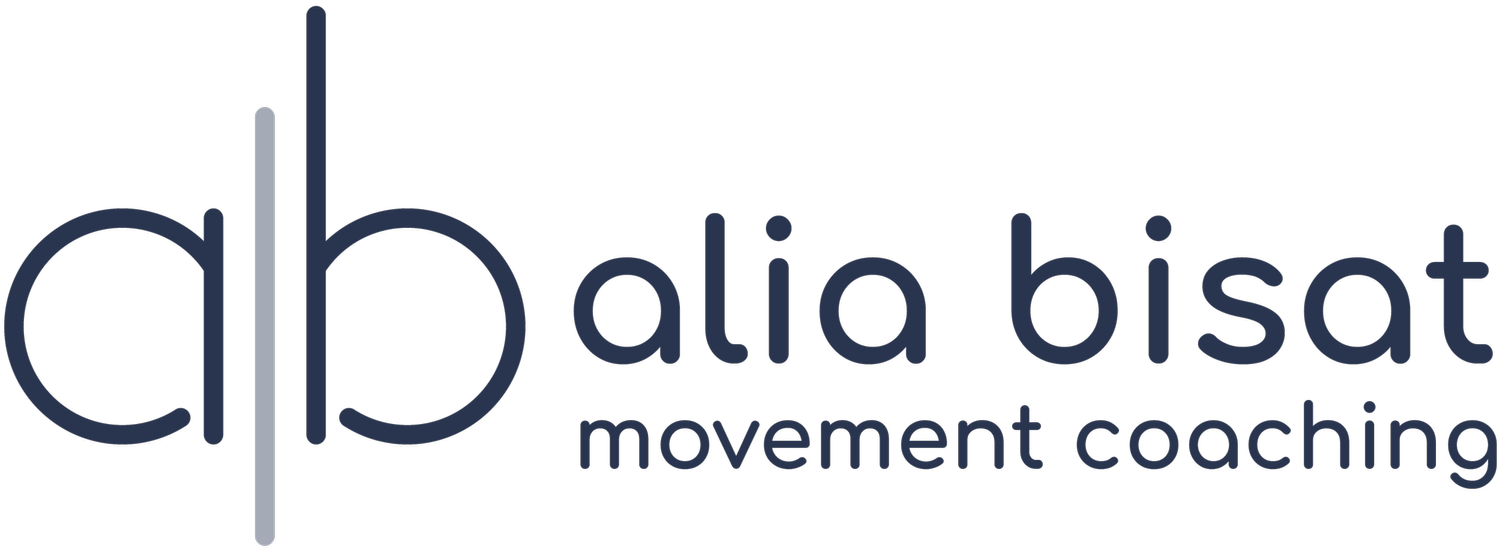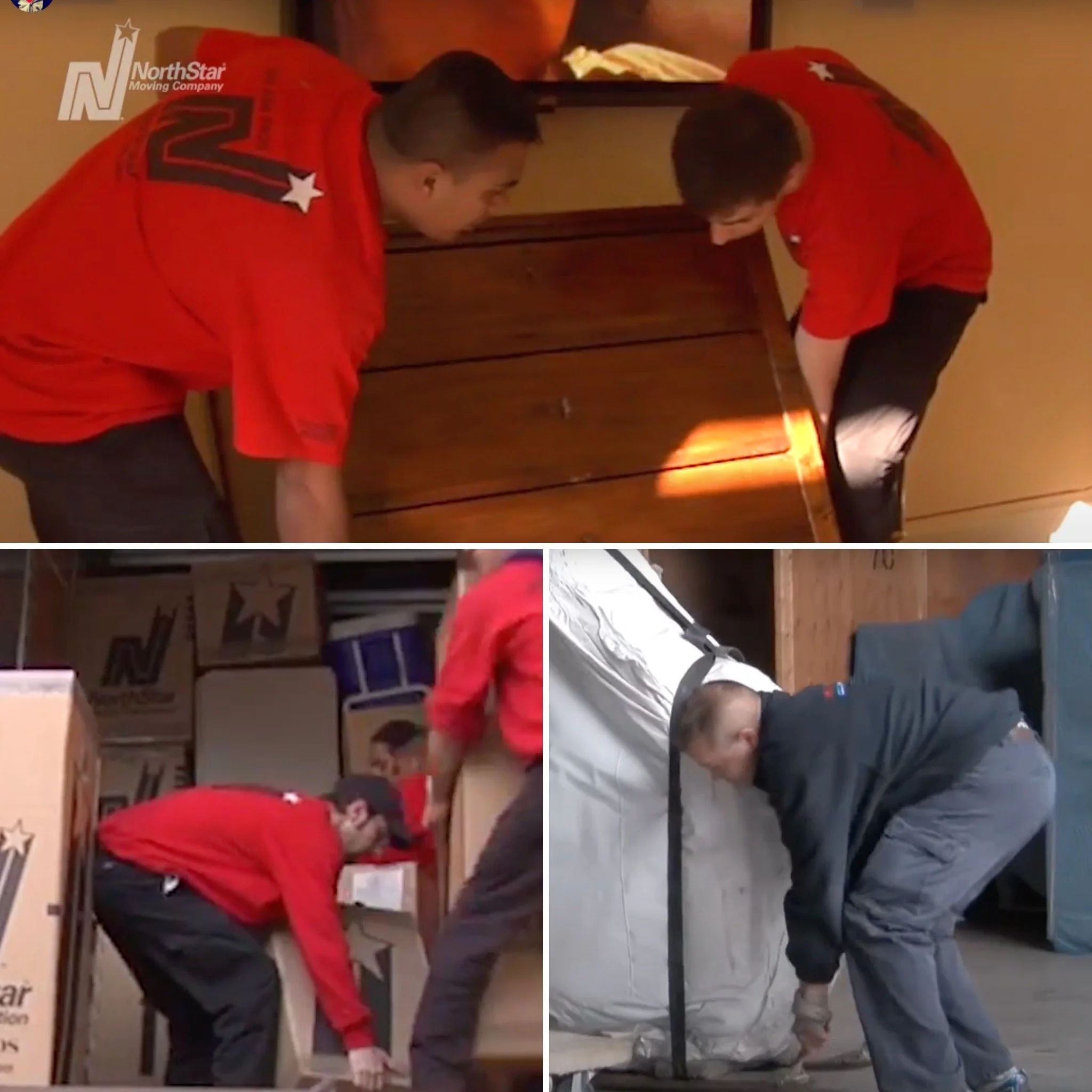“How do I properly lift a box?” — No such thing.
I was working with someone the other day and made a suggestion about her form during a kettlebell swing. She made the adjustment, completed the set, and then asked me, “Was that better?”
I answered, “It wasn’t better, it was different. Everything is a negotiation.”
What I meant was there’s no such thing as right/wrong or good/bad movements. Every movement choice is a negotiation between the goal of the movement, the physical capabilities of different parts of your body at that very moment in time, and the surrounding environment.
Let’s take picking up a heavy box up off the floor, for example. If you ask people how they think they should lift the box, most people will parrot the phrase “Bend with your knees, not your back.” But if you watch most people pick something up off the ground when they’re not thinking about it, you’ll see that they flex their spines. Take a look at these snapshots of professional movers:
They’re bending their backs . . . a lot. Bending over with bent knees, bent hips, and flexing the spine is usually the most efficient way to pick something up and the way most people do it naturally -- when they’re not thinking about it. Is that how to properly lift something? Is it the right way? There's no such thing, because there are too many follow-up questions. Right for whom? For what purpose? In what conditions? Rather than comparing the biomechanics of lifting from a “straight back” squat position (squat lift) versus a rounded one (stoop lift), I’d rather share what’s happening on a bigger scale. Those guys in the photos are subconsciously negotiating several things:
The task at hand: they need to pick the item up off the floor and take it somewhere. They also need to do it efficiently as they’re getting paid, and they need do it many times over.
Their body’s capabilities: Each guy has a unique amount of mobility at the ankles, knees, hips, spine, and shoulders. Each guy has a unique amount of strength in his legs, glutes, back, shoulders, and hands. Each guy has his own degree of coordinative ability, eyesight, balance, and endurance that play a part in how he chooses to position his body in that exact moment to lift the object.
The internal and external environment: The internal environment comprises things like the mood he’s in, past experiences he’s had that relate to movement and his body, his current hydration level, if he’s hungry, how he feels about the guys he’s working with or the person who hired him. The external environment comprises things like the texture/material of the object, the shape and size of it, the weight of it. Also what’s the weather like that day? How easy or spacious is the building in which he’s moving the object? Is there a dog barking at him?
The best option for how you move is the one you don’t have to think about. We’re subconsciously processing all of the things I listed above (and so much more) with every single movement we make. For most people who are not negotiating chronic pain or drastic mobility limitations, rounding their backs in a stoop lift position while picking something up tends to be the most efficient option for most things. But maybe you don’t want your eye glasses to slip off your face in which case you might squat down. Maybe you’re scooping up a toddler with one arm in which case squatting down would be more likely how you choose to do it so the child doesn’t topple backwards. Every movement is a negotiation and the negotiated outcome is: the most efficient form for that task, that person, in that moment.
So what does this mean for you?
In the world of optimistic rehab professionals, there’s a great saying: “There are no bad movements, only movements you’re not prepared for.”
Prepare for everyday life by training as many possible variations of a movement as you can. There’s a reason one of my favorite training tools is asking someone to get down and up off the floor in as many different ways as they can. Practice squatting with music and in silence, with your eyes closed and open, with your feet asymmetrically placed, and with a variety of weirdly shaped objects – not just weights.
This is because the only time a type of movement can become a problem is if it’s the only way we know how to move. It usually represents a limitation in strength, mobility, confidence, or sense of safety in a particular area of our body. If you only ever squat lift something off the floor, whether it’s a 50lb box or a pen, it could be helpful to address your spinal flexion limitations – whether it’s mobility, strength, fear/current pain, or a combination. If you only ever stoop down to pick something up, it could be helpful to address limitations that might be happening around your knees, hips or feet.
And I will add to the above saying, “The most efficient movement is the one you don’t have to think about.”
The efficiency will follow from the training. The more options you have to do something, the less you have to consciously think about it while doing it. (If you watch someone with low back pain try to pick something up off the floor, it’s slow, thoughtful, and very awkward. They don’t have a lot of options because they’re trying to avoid positions that cause pain).
The capability to do many things trumps being able to do one thing “right”
So, let’s not think about movements as good/bad, right/wrong, but rather let’s shift the focus on practicing to be capable at any kind of movement. The more options we have, the less we have to think about how to do something when it comes up in daily life = the more proficient we become in moving our bodies in general = the more confident we become and the better quality of life we have.



